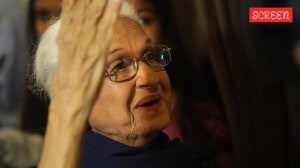Take 5 quotes
In June 2010,Egyptian businessman Khaled Said was killed after he put up a video on YouTube of policemen divvying up confiscated marijuana.
EGYPT
In June 2010,Egyptian businessman Khaled Said was killed after he put up a video on YouTube of policemen divvying up confiscated marijuana. Wael Ghonim,a Google executive,created a Facebook page called We Are All Khaled Said and put up pictures of Said in the morgue. The Facebook page attracted some 500,000 members and became a rallying point for the outraged Egyptians.
TUNISIA
On December 17,2010,Mohamed Bouazizi,a vegetable vendor,set himself on fire after police confiscated his cart. The suicide sparked outrage and angry Tunisians used Twitter to organise their protests,resulting in President Zine al-Abidine Ben Al fleeing the country. After the new government took over,Tunisias minister of infrastructure and transport,Yassine Brahim,was quoted as saying,We are going to leverage social media to build a horizontal democracy rather than a vertical democracy.
IRAN
The Green Revolution of June 2009 in Iran,which erupted after President Mahmoud Ahmadinejad was re-elected in the elections,was probably the first world event that was broadcast throughout the world almost entirely through social networking sites. As the regime blocked websites and channels,hackers spread the word about functioning proxy portals. They also reportedly took down Ahmadinejads website.
MOLDOVA
After a string of revolutions named after colours or flowersOrange for Ukraine,Rose for Georgia,Tulip for Kyrgyzstancame along a Twitter Revolution. The April 2009 uprising in Moldova,a country in eastern Europe,was coordinated by the social media and ultimately led to the downfall of the Communist Party in Moldova. During the uprising,one of the most popular Twitter searches was #pman the abbreviation for Piata Marii Adunari Nationale,the Romanian name for the main square in capital Chisinau and the epicentre of the protests.
BURMA
In October 2007,when the military junta in Burma cracked down on protesting monks,the world watched,thanks to the images and videos that Burmese citizens and tourists shot and transmitted to the outside world. A Facebook group sprung up to support the monks,and swiftly grew to more than 350,000 members. The junta reacted by shutting down Internet access in Burma for a week,finally re-opening limited access at night during curfew hours.


- 01
- 02
- 03
- 04
- 05





























